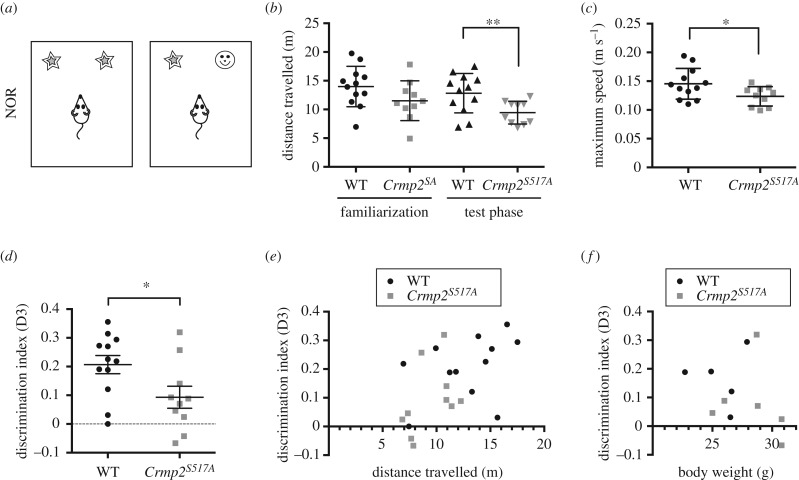Figure 4.
Crmp2S517A mice exhibit impaired short-term recognition memory. (d)–(f) Novel object recognition (NOR) test (male, WT, n = 12; Crmp2S517A, n = 10; mean ± s.d.). (a) NOR task. (b) Distance travelled during familiarization and test phase. Crmp2S517A mice (9.4 ± 2.0 m) travelled less distance during the test phase than WT control (12.8 ± 3.4 m) animals; p = 0.0099, unpaired t-test. (c) Maximum speed reached during the test phase. Crmp2S517A animals (0.124 ± 0.017 m s−1) showed slower maximum speed than WT (0.145 ± 0.027 m s−1); p = 0.0327; unpaired t-test. (d) Discrimination index (D3) for WT (0.21 ± 0.11) and Crmp2S517A mice (0.09 ± 0.12); p = 0.0338; unpaired t-test. (e) Positive correlation between D3 and distance travelled during the test phase; Pearson r = 0.5344; p = 0.0104; n = 22. (f) Correlation analysis between D3 and body weight; Pearson r = −0.2950; n.s.; n = 11.

